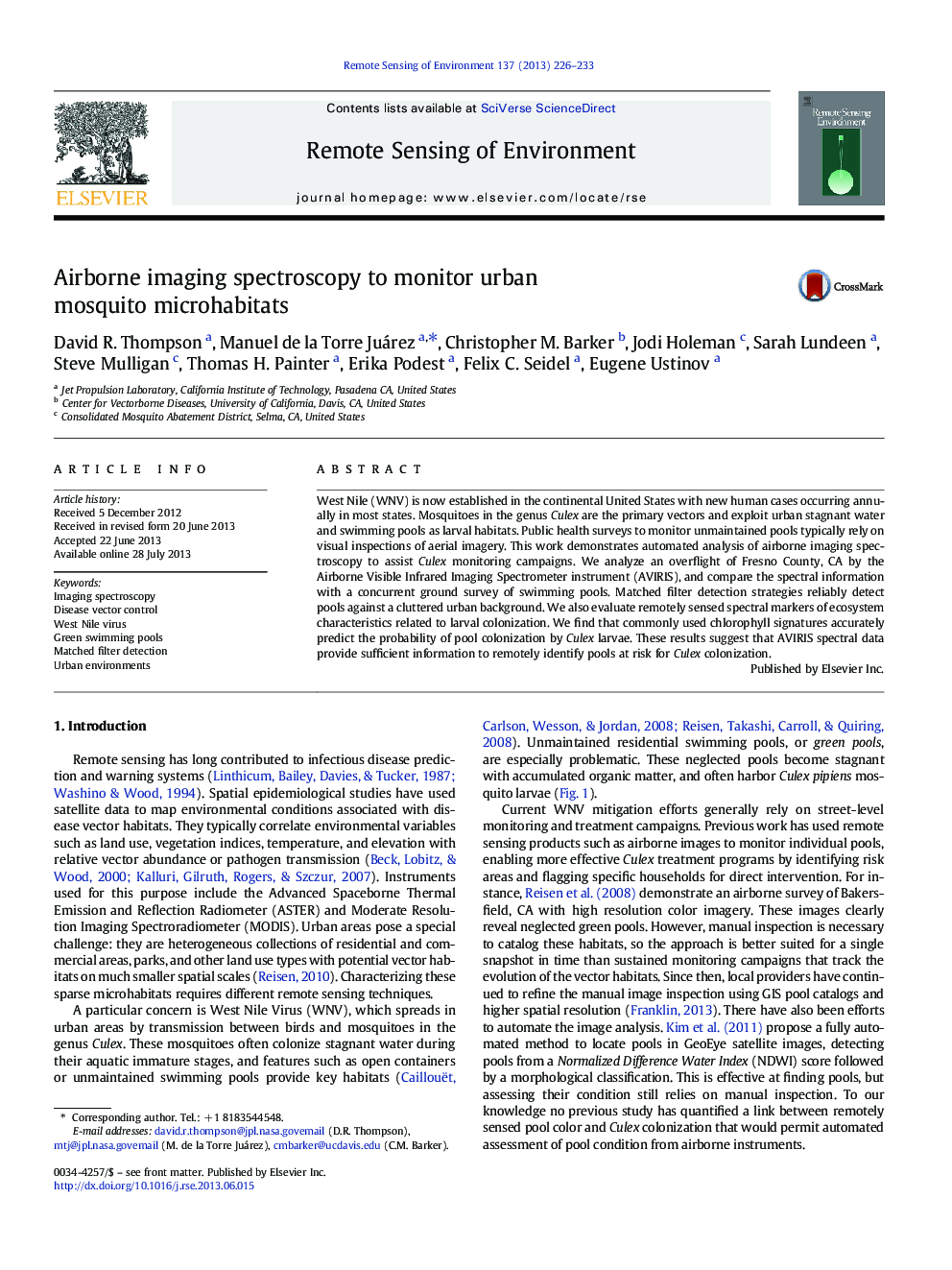| Article ID | Journal | Published Year | Pages | File Type |
|---|---|---|---|---|
| 6347356 | Remote Sensing of Environment | 2013 | 8 Pages |
Abstract
West Nile (WNV) is now established in the continental United States with new human cases occurring annually in most states. Mosquitoes in the genus Culex are the primary vectors and exploit urban stagnant water and swimming pools as larval habitats. Public health surveys to monitor unmaintained pools typically rely on visual inspections of aerial imagery. This work demonstrates automated analysis of airborne imaging spectroscopy to assist Culex monitoring campaigns. We analyze an overflight of Fresno County, CA by the Airborne Visible Infrared Imaging Spectrometer instrument (AVIRIS), and compare the spectral information with a concurrent ground survey of swimming pools. Matched filter detection strategies reliably detect pools against a cluttered urban background. We also evaluate remotely sensed spectral markers of ecosystem characteristics related to larval colonization. We find that commonly used chlorophyll signatures accurately predict the probability of pool colonization by Culex larvae. These results suggest that AVIRIS spectral data provide sufficient information to remotely identify pools at risk for Culex colonization.
Related Topics
Physical Sciences and Engineering
Earth and Planetary Sciences
Computers in Earth Sciences
Authors
David R. Thompson, Manuel de la Torre Juárez, Christopher M. Barker, Jodi Holeman, Sarah Lundeen, Steve Mulligan, Thomas H. Painter, Erika Podest, Felix C. Seidel, Eugene Ustinov,
